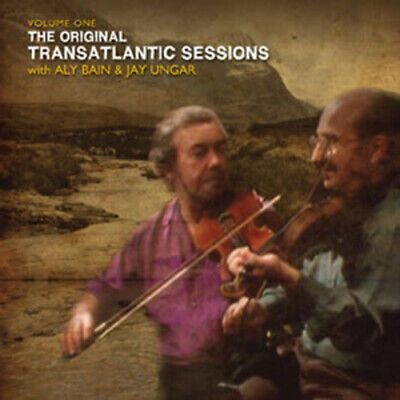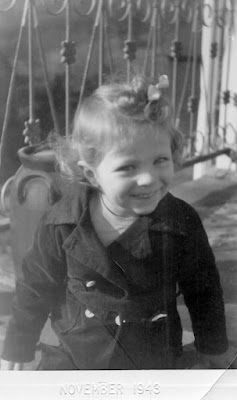Welcome to my past.
1. STRANGER THAN FACT: PREPPY JOHN WRITES A STORY
2. CLEAN UNDERWEAR, FRIED CHICKEN, AUNT TONKIE’S BANANA ROLLS AND HOLLOW DIPS: DAD DOES COLLEGE
3. INCIDENTAL ENCOUNTERS
Or, TOM WAITS FOR NO MAN
4. BUT I WANTED TO BE A COWBOY: A DIALOGUE
5. THANK YOU MASK MAN
6. SUNDAY BEST
7. A JOYFUL NOISE: HOW I ACCIDENTALLY BECAME AN INTERNATIONAL BLOGGER
8. SUNSHINE BOYS
9. NAUGHTY BOYS OF THE LOUGH/A WALK IN DECEMBER
10. STUPA DREAMING: A CREATIVE PROCESS
11. DAD AND THE CHRISTMAS CHAIR
12. CARDPLAY: THE HISTORY OF A F*RT
13. GOOD FOR WHAT AILS YA, Or, TIA LAURITA FOR THE SOUL
14. WHEN MY SISTER WAS AN ONLY CHILD
15. STUPA FOR THẦY (I AM NOT HERE)
16. ALAN WATTS AND THE TAO OF POO(P)
17. SPECIAL DELIVERY
18. RETRO VALENTINE CODA
19. RAINBOW CONNECTIONS: THE ART OF SYNCHRONICITY
20. THREE LITTLE GIRLS, JUST A-SPLASHIN’ IN THE GENE POOL
@@@@@@@@@@@@@@
His unnamed protagonist, attempting to smuggle a family from East Berlin into West Berlin through the infamous “Checkpoint Charlie,” by concealing them in a compartment built into his VW, is betrayed to the Stasi (East German police), arrested and imprisoned.
We all thought it was an interesting premise, but, read in John’s somewhat monotonous voice and low-key manner, it didn’t quite come off. We offered a number of suggestions to make it “more gripping,” and the hero “more believable.” John wrote them all down and thanked us.
As he was not a natural writer, and there were no autobiography-writing classes available, John had cleverly contrived to get help with his book by disguising fact as fiction.
At that point, he was an odd hybrid of a boy. Growing up in the semi-rural depressed town of Booneville, Arkansas, he went barefoot from May to September, partly from inclination, and partly because of the cost of shoe leather. He worked 10-hour days chopping (weeding and thinning) cotton in the hot sun for 15¢ an hour.
This document includes several pages, revealing that the class of 30’s official colors were pink and green (possibly because girls outnumbered boys in his graduating class); the class flower was the pink rose, and the class motto (in Latin) was: Non Progredi est recedi (not to go forward is to go backward).
His uncle Charles Elkins, a go-getter entrepreneur and inventor (he would die a multimillionaire) was then based in Allentown, Pennsylvania. My Grandmother Hill, proud of her boy, had sent Charles a copy of the yearbook, in which Dad appeared prominently as “Best All Around” this and “Most Likely” that, including “Best Athlete.”
So imagine, if you will, that erstwhile shy barefoot country boy, speaking in a deep-fried Arkansas accent laced with Elizabethan idioms and pronunciations, plunked down in the middle of a cluster of ivy-covered and venerable buildings (Lafayette was founded in 1832, when the Marquis de Lafayette himself visited Easton on a post-Revolution tour), playing sports and attending classes with young Northern gentlemen, many from families of means.
He also competed in track for four years, the last as team captain. Using a bamboo pole, he set a Middle Atlantic pole-vaulting record long before the advent of fiberglass poles, and a college record that lasted into the 1960s. He attributed his skill to a time-honored method of fording streams in Arkansas by propelling oneself over them with a sapling.
When we attended basketball games at the Lafayette gym in later years, we kids would always search out the big bronze record plaque hanging on the wall with his name on it. I was with him the day that record was broken (by a guy using a fiberglass pole) in the 1960s. Dad was the first out on the field to congratulate him.
He looked up, spotted me, and said: “Oh, hi. I’m Tom. I’m just waiting for Ray Bierl.” At that moment, Ray, one of the talented musicians who lived at 885 Clayton, came bounding down the stairs.
It was essentially a showcase and launching pad for talented youngsters pursuing professional careers, and over the years produced, among others, stars like Rosemary Clooney, actress Ann Sheridan, Eddie Fisher, Frankie Avalon, Connie Francis, Joey Heatherton and the multitalented Bernadette Peters.
https://www.youtube.com/watch?v=R2O5540WjuE (Libera/”Salva Me”/solo by Joe Snelling/from the 2007 PBS Special Angel Voices: Libera in Concert/3:32)
 |
| Performing to a live crowd of 1.7 million, a vast TV audience, and Pope Francis in a a World Youth Day festival. |
 |
| Tiny eight-year-old Freddie Ingles is dwarfed by older singers while simultaneously speaking on TV and being translated into Japanese. No pressure. ********************* |
 |
| Libera Passion members' section |
With the growing flexibility of Twitter, the roving Patrick can now attend a concert, send information to Quentin, and by the end of the first half, fans can access not only the (tweeted) song list and the names of the actual singers and musicians performing but a chart showing who sang which first-half solos/duets and who spoke between groups of songs, followed by a second-half equivalent; and rehearsal/concert photos posted by Libera (no audience photography allowed during concerts).*
 |
| Libera Dreams screenshot |
 |
| Tiny section of the Libera Member Timeline, not to be confused with the Libera Historical Timeline. |
 |
| From the music video of "The Moon Represents My Heart," sung entirely in Mandarin. |
 |
| A giggle of miniboys. |
 |
| Libera singers (top row) Sam, Lucas, Rocco, and Taichi present their little brothers Victor, Theo, Romeo, and Koji as "miniboys" (6-8-year-olds entering the group on probation). |
 |
| Soloist Tadgh Fitzgerald, in his prime, appears before a background of boys performing remotely. |
It provides blooper footage of the process of getting dozens of faces and voices—including the newest “miniboys” and quite a few alumni—together electronically from separate locations; and a delightful segment that shows how the youngsters amused themselves during lockdown.
 |
| Me with John Roberts (R) and Tony Barrand at the 1972 Philadelphia Folk Festival. |
As evening approached, and especially on those nights when the Boys returned to 885 Clayton high on the energy of a successful gig and surrounded by fellow randy and well-oiled musicians to play on into the night, I learned, as the only unattached young woman in residence, to take preemptive measures.
 |
| Red |
 |
| Orange |
 |
| Yellow |
 |
| Green |
 |
| Blue |
 |
| Indigo |
 |
| Not our actual Christmas tree, but close enough. |
 |
| A later tree-hunting expedition in Vermont with Dad on left, my mother, me, and brother David. |
Dad and I, being much alike, bumped heads a lot when I was growing up, but eventually became the best of friends. One day, much later in life, I phoned him just before Christmas, at his lovely retirement village on the other side of the country.
 |
| Still BFFs. @@@@@@@ |
 |
| Spirit Rock |
The focus of the retreat was the presence of the extraordinary Zen Buddhist monk, poet, peacemaker, activist, writer and teacher Thich Nhat Hanh, known to his followers, friends, and admirers as simply “Thầy,” (teacher).
 |
| With the Dalai Lama |
 |
| Dancing as May Queen. |
 |
| She comes by it naturally: little Morgan shows her 'tude in a novelty photo shoot with her dad (my brother David) and mom Susan Fuller. |
 |
New York City Morgan (L) and Vermont Morgan (with pal Roxy). |
 |
| As a tiny tot in a school talent show... |

































































































































































